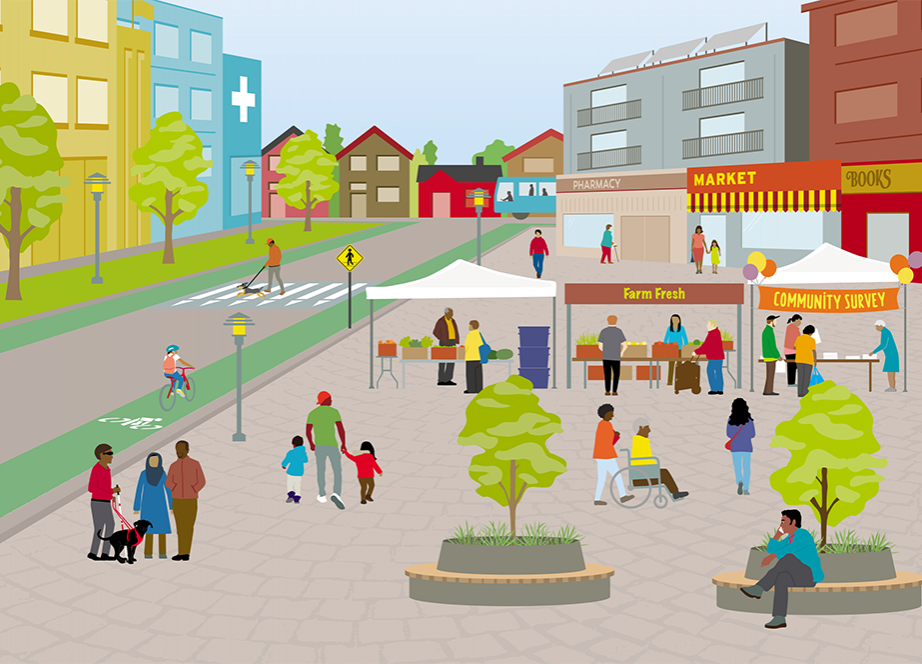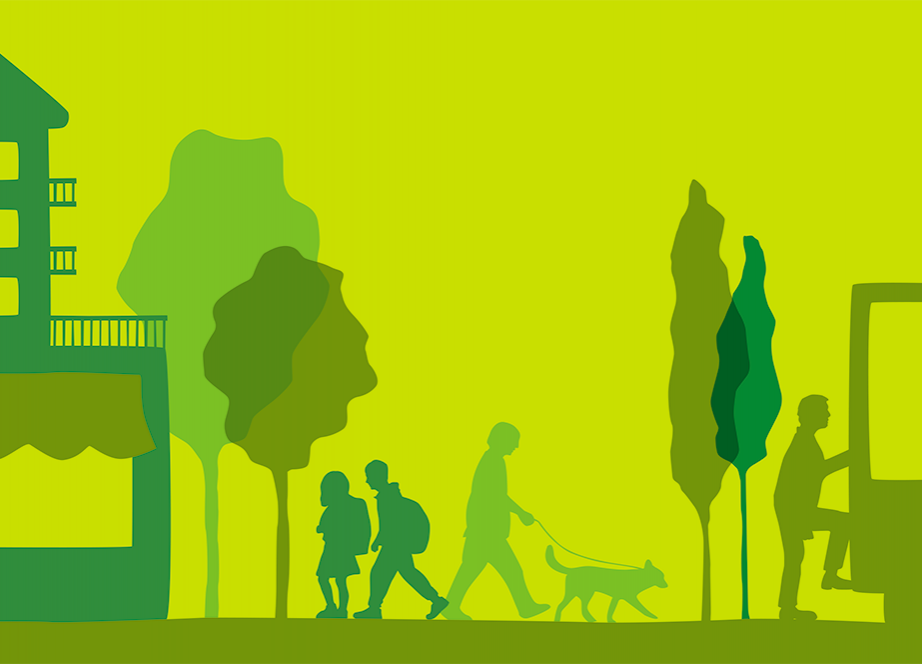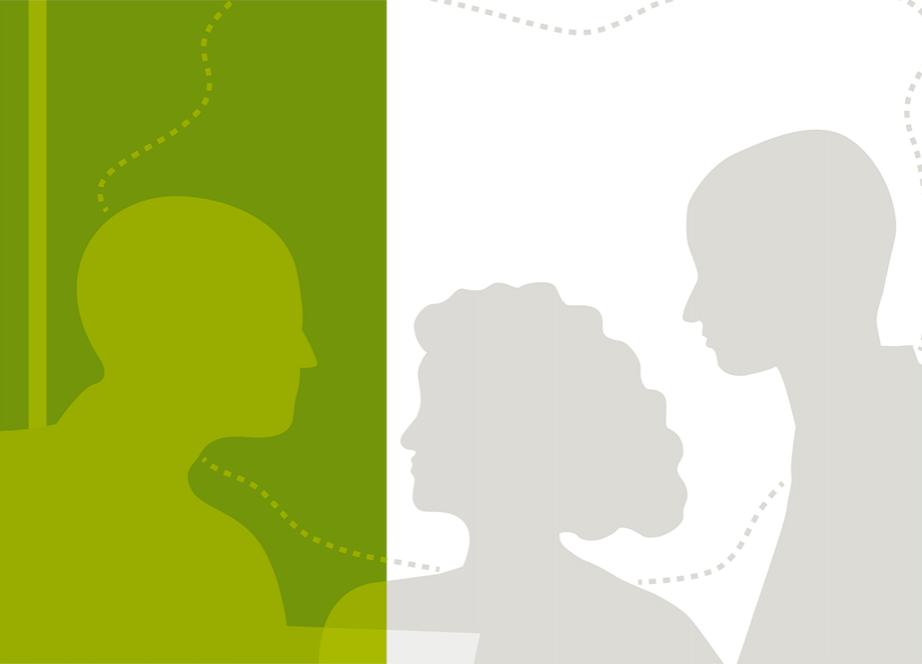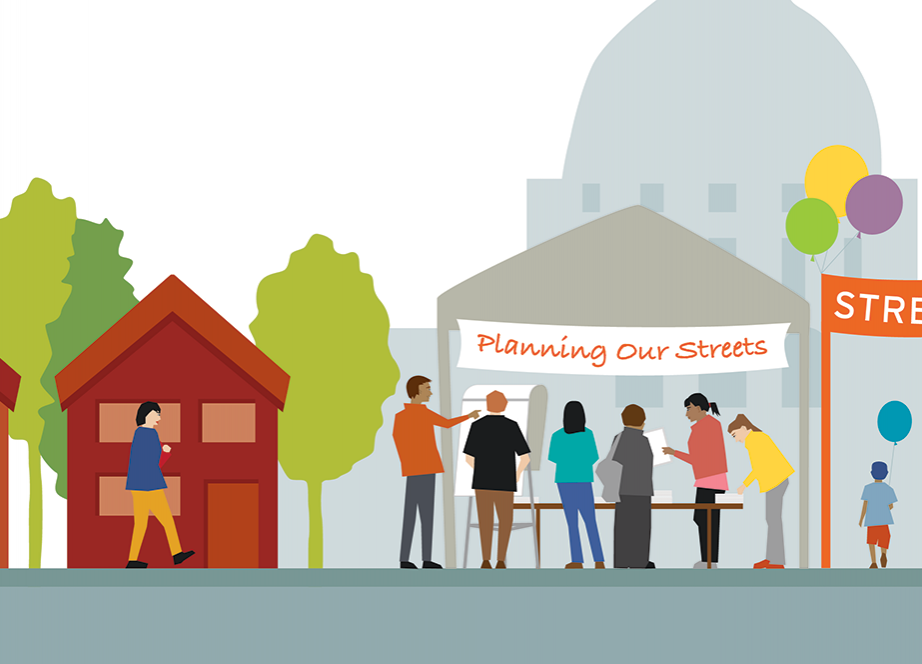Land use categories delineate the types of activities that people undertake as they go about their daily lives and meet their daily needs:
- Housing – where people sleep, cook, clean up, and relax
- Retail – where people shop for groceries, clothes, and other goods they want or need
- Office and Industrial – where many people work
- Civic – where government services are administered and community gatherings are held
- Schools – where people of all ages are educated
- Open Space – where people relax and recreate
- Agriculture – where food is grown
These activities occur in centers, districts, corridors, and neighborhoods across a community. Each of these places is defined by its mix of land uses as well as its intensity and character of development (generally on a spectrum from rural to urban). Different patterns of land use and development influence people’s behaviors, experiences, and physical health in different ways.
Land use planning regulates the built environment by using land use categories to establish where in a community these different activities are permitted or restricted and what the buildings that accommodate these uses can look like. When communities regulate land use, they shape their built environment over time. By doing so, communities can provide residents and visitors with physical, emotional, social, economic, and civic benefits and help create healthier and fairer communities for the next generation. Therefore, it is critical that communities integrate health and equity considerations into their land use policies, plans, and practices.
Our land use tools are for city managers, planners, local leaders, and advocates who want to improve community health. Access the products below or see our collection of planning resources.



